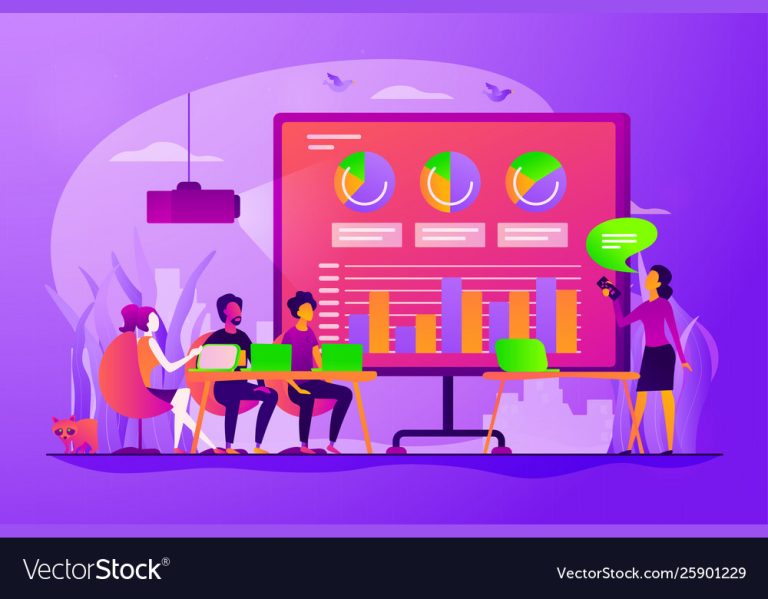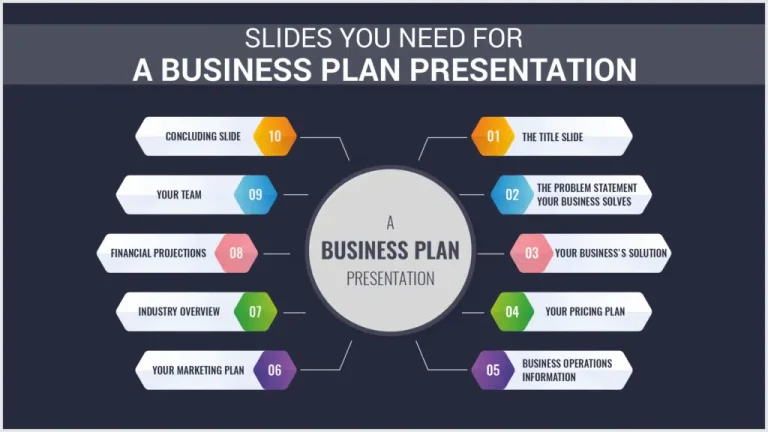Things to Carry in A Presentation
For a successful presentation, it is crucial to carry essential items such as slides, notes, a laptop, a clicker, and handouts. A well-prepared presenter will have all the necessary materials readily available to deliver an engaging and informative presentation.
Delivering a successful presentation requires careful preparation, and part of that preparation involves knowing what essential items to carry. By ensuring you have the necessary tools and materials at your disposal, you can confidently deliver an engaging and informative presentation.
We will explore the key things you should have with you when delivering a presentation. From slides and notes to technology and handouts, each item plays a vital role in creating a memorable and impactful experience for your audience. So, let’s dive in and discover what you need to pack in your presentation toolkit.
Essential Presentation Tools
Laptop or tablet
A laptop or tablet is a must-have tool for any presentation. It allows you to present your content professionally and efficiently. With a laptop or tablet, you can easily create and access your presentation materials, such as slideshows, presentations or videos.
Make sure to choose a laptop or tablet that meets your specific needs. Consider factors such as screen size, processing power, storage capacity, and battery life.
Projector or display
A projector or display is essential for projecting your presentation onto a larger screen. It enables your audience to see your content clearly and allows for better engagement.
When selecting a projector or display, consider the venue size and lighting conditions. High brightness, resolution, and contrast ratio are crucial factors to ensure a quality viewing experience for your audience.
USB drive
A USB drive is an indispensable tool to have when presenting. It allows you to easily transfer your presentation files between devices or quickly share them with others.
Ensure your USB drive has enough storage capacity to accommodate your presentation files. It’s also a good practice to have a backup copy of your presentation on another USB drive or cloud storage.
Organizational Materials
Presentation script or outline
An essential organizational material to carry in a presentation is a well-prepared script or outline. This will help you stay focused and streamlined throughout the presentation, ensuring you cover all the important points without faltering. Writing a script or outline in advance gives you a clear roadmap to follow, helping you deliver a confident and structured presentation.
Notes or cue cards
Keeping notes or cue cards handy during a presentation is crucial for staying on track and remembering key information. These can be brief reminders of important statistics, quotes, or talking points that you want to emphasize. By using notes or cue cards, you can ensure you don’t miss any vital details and maintain a smooth flow of information.
Pen and notepad for jotting down ideas or questions
Having a pen and notepad at hand during a presentation is beneficial for various reasons. Firstly, you might come up with new ideas or additional points that you want to include on the spot. Jotting them down will help you remember them later and incorporate them into your presentation if necessary. Secondly, audience members may ask questions or provide valuable insights that you hadn’t considered. By writing down these questions or ideas, you can address them later or use them to enhance your content.
Overall, carrying these organizational materials is instrumental in delivering a well-structured and effective presentation. By having your presentation script or outline, notes or cue cards, and a pen and notepad, you will feel more confident and in control during your presentation, ensuring a seamless and impactful delivery.
Visual Aids
PowerPoint slides or other visuals
Having compelling visual aids in your presentation is crucial for keeping your audience engaged and enhancing their understanding of the topic. PowerPoint slides or other visuals not only make your presentation more visually appealing but also help convey information effectively. Integrating visually appealing content like graphs, charts, images, and videos can help break the monotony of a text-heavy presentation and make it more interactive.
Handouts or printed materials for distribution
In addition to using visual aids during your presentation, providing handouts or printed materials for distribution can further enhance the understanding and retention of the information you presented. Handouts serve as valuable takeaways that your audience can refer to later. Be sure to include key points, additional resources, and any relevant diagrams or illustrations to support your presentation. Handouts not only aid comprehension but also serve as a useful reference for your audience.
Props or physical objects for demonstration
In certain presentations, props or physical objects can be powerful tools for enhancing audience engagement. Props can help to convey complex information, demonstrate processes, or provide a tangible representation of your topic. For example, if you are giving a presentation on the benefits of eco-friendly packaging, you could bring in physical examples to showcase different types of environmentally friendly packaging materials. This hands-on approach not only captures your audience’s attention but also makes your presentation more memorable and impactful.
To summarize, when it comes to visual aids in presentations, PowerPoint slides or other visuals, handouts or printed materials for distribution, and props or physical objects for demonstration play significant roles in engaging your audience, reinforcing key points, and improving comprehension. By leveraging these visual aids effectively, you ensure that your presentation leaves a lasting impression on your audience.
*Effective Slide Design*
Effective Slide Design
When delivering a presentation, having an effective slide design is crucial. Your slides should not only complement your message, but also engage and captivate your audience. Here are three key elements to consider for an impactful and visually appealing slide design.
Clear and concise messaging
One of the most important aspects of slide design is ensuring that your messaging is clear and concise. Each slide should focus on a single idea or key point, allowing your audience to easily understand and absorb the information. To achieve this, keep your text minimal, using short sentences or bullet points. Avoid using lengthy paragraphs that may overwhelm or confuse your viewers.
Use of visuals and graphics
Incorporating visuals and graphics into your slides can greatly enhance the overall impact of your presentation. Visuals can help convey complex ideas or data in an easy-to-understand manner. Utilize relevant images, diagrams, charts, or graphs to support your message. Ensure that these visuals are high-quality, relevant, and appropriately placed on the slide. Consider using charts or graphs to present statistical information, as they can be more visually appealing and easier to comprehend.
Consistent color scheme and font style
Consistency is key when it comes to slide design. Opt for a cohesive color scheme and font style throughout your entire presentation, as this helps create a professional and polished look. Choose colors that are visually appealing and complementary to your brand or topic. Stick to a maximum of three main colors to avoid overwhelming your audience. Similarly, select a legible font style that can be easily read from a distance. Use a consistent font size and formatting for headings, subheadings, and body text.
By incorporating these elements into your slide design, you can create a visually appealing and impactful presentation that effectively engages your audience. Remember, the purpose of your slides is to support and enhance your message, not overshadow it. Keep it simple, yet visually captivating, for maximum impact.
*Engaging Presentation Techniques*
When it comes to delivering a successful presentation, engaging your audience is key. The last thing you want is for your audience to lose interest and tune out. By implementing these engaging presentation techniques, you can captivate your audience from start to finish and leave a lasting impression.
Eye contact and body language
One of the most effective ways to engage your audience is through eye contact and body language. Maintaining eye contact shows that you are confident and trustworthy, while also making a personal connection with each individual. Additionally, using appropriate body language, such as open gestures and a relaxed posture, helps to convey your enthusiasm and passion for the topic.
Storytelling or anecdotes
Storytelling is a powerful tool for capturing your audience’s attention and keeping them engaged throughout your presentation. Sharing relevant stories or anecdotes helps to create a personal connection and make your content relatable. By incorporating storytelling into your presentation, you can not only convey information but also evoke emotions and make your message memorable.
Audience participation and involvement
Another effective technique for engaging your audience is to encourage participation and involvement. Instead of delivering a one-way monologue, make your presentation interactive by asking questions, conducting polls or surveys, or inviting volunteers to participate in demonstrations. This not only captures your audience’s attention but also ensures that they are actively involved in the learning process.
In conclusion, incorporating these engaging presentation techniques such as maintaining eye contact and using appropriate body language, incorporating storytelling or anecdotes, and encouraging audience participation and involvement can make all the difference in delivering a memorable and impactful presentation. By implementing these techniques, you will not only capture and retain your audience’s attention but also leave a lasting impression that resonates with them long after the presentation is over.
Rehearsal And Preparation
Rehearsal and Preparation
When it comes to delivering a successful presentation, rehearsing and preparing beforehand is essential. It not only helps you refine your delivery, but also ensures that you stay on track and captivate your audience. In this section, we’ll explore three key aspects of rehearsal and preparation: practice sessions to refine delivery, timing and pace of the presentation, and backup copies of presentation materials.
Practice sessions to refine delivery
To deliver a presentation that truly grabs your audience’s attention, practice sessions are crucial. These sessions allow you to fine-tune your delivery and become more comfortable with the content. Here are a few tips to make the most out of your practice sessions:
1. Record yourself: Use a video or audio recording device to capture your practice sessions. By reviewing the recordings, you can identify areas where you may need improvement, such as speaking too fast or lacking enthusiasm.
2. Seek feedback: Share your practice sessions with a trusted colleague or mentor who can provide constructive feedback. They can help you identify any weaknesses and offer suggestions for improvement.
3. Focus on timing: Pay attention to the overall length of your presentation and the time allocated to each section. Aim to strike a balance between providing enough information and not exceeding your allotted time.
Timing and pace of the presentation
The timing and pace of your presentation can significantly impact its effectiveness. Consider the following tips to ensure you deliver your presentation with the right timing and pace:
1. Use a timer: Set a timer or use the built-in timer feature in presentation software to keep track of the time you spend on each slide or section. This will help you stay on track and avoid rushing or dragging certain parts.
2. Take pauses: Pauses are powerful tools to emphasize important points, allow your audience to digest information, and create a sense of anticipation. Practice inserting natural pauses in your delivery to maintain a smooth and engaging pace.
3. Adjust your pace to the audience: Be mindful of your audience’s comprehension level and adjust your pace accordingly. Slow down when discussing complex concepts, and speed up when covering familiar ground.
Backup copies of presentation materials
Imagine the nightmare of losing all your presentation materials right before a crucial presentation. To avoid such a scenario, it is essential to have backup copies of your presentation materials. Take the following precautions:
1. Save multiple copies: Save your presentation on multiple devices, such as your computer, an external hard drive, or cloud storage. This way, you’ll have access to your materials even if one device fails or gets misplaced.
2. Test your backups: Regularly test your backup copies to ensure they are complete and functional. This will give you peace of mind knowing that your materials are ready for any unforeseen circumstances.
3. Bring physical copies: Additionally, consider bringing physical copies of your presentation materials, such as handouts or printed slides. This can be a lifesaver if technical difficulties arise, or if your audience prefers tangible materials.
In conclusion, thorough rehearsal and preparation are essential for a successful presentation. By refining your delivery through practice sessions, paying attention to the timing and pace of your presentation, and having backup copies of your materials, you can confidently deliver a compelling presentation that resonates with your audience.
Backup And Technical Requirements
When it comes to presentations, having backup and technical requirements in place is essential to ensure a smooth and successful presentation. These requirements include extension cords and power adapters, extra batteries for wireless devices, and internet backup options for online presentations.
Extension cords and power adapters
Extension cords and power adapters are often overlooked but can save the day in a presentation. You never know where the nearest power source will be, so having an extension cord can help you reach outlets that are further away. Additionally, having power adapters on hand ensures that your devices can be charged and ready to go.
Extra batteries for wireless devices
Wireless devices such as remote controls or laser pointers can be a lifesaver during a presentation. However, there’s nothing worse than having your battery die in the middle of your talk. To avoid this unfortunate situation, make sure to carry extra batteries for your wireless devices. This way, you can easily swap out drained batteries and keep your presentation flowing seamlessly.
Internet backup options for online presentations
In today’s digital age, online presentations have become increasingly popular. However, a stable internet connection is not always guaranteed. To ensure that your online presentation goes off without a hitch, it’s crucial to have internet backup options in place. One option is to bring a portable Wi-Fi hotspot or a wireless router that can help create a secure network. Another option is to have your presentation downloaded and saved locally on your device, so you can still present even without an internet connection.
Personal Items
When preparing for a presentation, it’s important to not only focus on the content of your presentation but also on your personal presentation. Paying attention to small details can make a huge difference in how you are perceived by your audience. In this section, we will discuss the personal items you should consider carrying with you to ensure a successful presentation.
Water bottle or refreshments
Staying hydrated is crucial when delivering a presentation. Lack of proper hydration can affect your ability to speak clearly and maintain focus throughout your presentation. To avoid any potential distractions, it’s a good idea to have a water bottle or other refreshments on hand. This will not only help you stay hydrated but also provide a sense of comfort and confidence.
Breath mints or fresheners
When speaking in front of a large group, it’s important to maintain fresh breath. Bad breath can be off-putting and distract your audience from your message. To ensure that your breath is fresh, carry some breath mints or breath fresheners with you. Pop one in your mouth before you start speaking or during any breaks to keep your breath fresh and your confidence soaring.
Professional attire and accessories
First impressions matter, especially during a presentation. Your attire and accessories should reflect a professional image to establish credibility and engage your audience effectively. Dress appropriately for your presentation and ensure that your outfit is comfortable and well-fitting. Pay attention to small details like ironing your clothes, polishing your shoes, and grooming yourself to make a positive impact.
Accessories also play an important role in your overall presentation. Choose accessories that complement your attire and help you convey your message effectively. For example, if you are using a laser pointer during your presentation, make sure it is working properly and easily accessible.
By keeping these personal items in mind and incorporating them into your presentation preparation, you can enhance your overall performance, boost your confidence, and leave a lasting impression on your audience!
Q&A And Interaction
One crucial aspect of any presentation is the opportunity for a question and answer (Q&A) session and interaction with the audience. This section focuses on the essential items you should carry to ensure a smooth and engaging Q&A experience.
Written or digital handouts for reference
When conducting a presentation, having written or digital handouts can be immensely helpful. These handouts can include key points, statistics, or diagrams related to your presentation. By providing these materials, you give your audience the opportunity to reference the information later and follow along more easily during the Q&A session.
Microphone or audio devices for large audiences
For larger audiences or venues, it is essential to have a microphone or audio devices available. This ensures that everyone in the audience can hear the questions and responses clearly. Poor audio quality can hinder communication and lead to a disengaged audience, so investing in a reliable microphone or audio system is crucial.
Additional resources or references to share with the audience
In some presentations, you may want to provide additional resources or references to share with your audience. These resources can consist of books, articles, websites, or even visual aids that delve deeper into the topic you are presenting. By providing these additional materials, you demonstrate your expertise and genuine interest in helping your audience further explore the subject.
Overall, a successful Q&A session and interaction with the audience can greatly enhance the impact of your presentation. By being prepared with written or digital handouts, a microphone or audio devices for larger audiences, and additional resources or references to share, you ensure that your audience remains engaged and informed even after the presentation concludes.

Credit: www.emporiagazette.com
Frequently Asked Questions For Things To Carry In A Presentation
What Is The 5 5 Rule In Presentation?
The 5 5 rule in presentation suggests that sentences should be concise, with a maximum of 20 words each. Writing should be SEO friendly, unique, and easy to understand, following the active voice and without starting with specific phrases. It should pass AI writing detection and read like it’s written by a human.
What Are The 7 7 Rules Presentation?
The 7 7 rules presentation refers to a set of guidelines for delivering effective presentations. These rules emphasize brevity, SEO-friendly writing, and active voice. It is important to avoid certain starting phrases and passive voice, and to ensure the content is unique, plagiarism-free, and easy to understand.
What Are The Essential Items To Bring For A Presentation?
Carrying a laptop, projector, slide clicker, notes, and handouts are essential for a successful presentation. These items help you stay organized, engage your audience, and provide necessary information to support your presentation.
How Should I Prepare Materials For A Presentation?
To prepare materials for a presentation, create visually engaging slides using relevant images and concise text. Organize your content in a logical flow, practice your presentation to ensure smooth delivery, and consider providing handouts or additional resources for your audience to reference.
Conclusion
To wrap up, a successful presentation requires careful planning and the right tools. By following these essential guidelines, you can ensure that your presentation is engaging and impactful. Remember to bring your laptop or device, charger, and any necessary adapters.
Consider using visual aids like slides or charts to enhance your message. Don’t forget to have a backup plan in case of technical difficulties. And finally, practice your presentation to feel confident and maintain a steady pace. By being prepared and organized, you can deliver an effective presentation that leaves a lasting impression on your audience.
So, gather these essential items, practice your delivery, and get ready to wow your audience with a winning presentation. Happy presenting!



